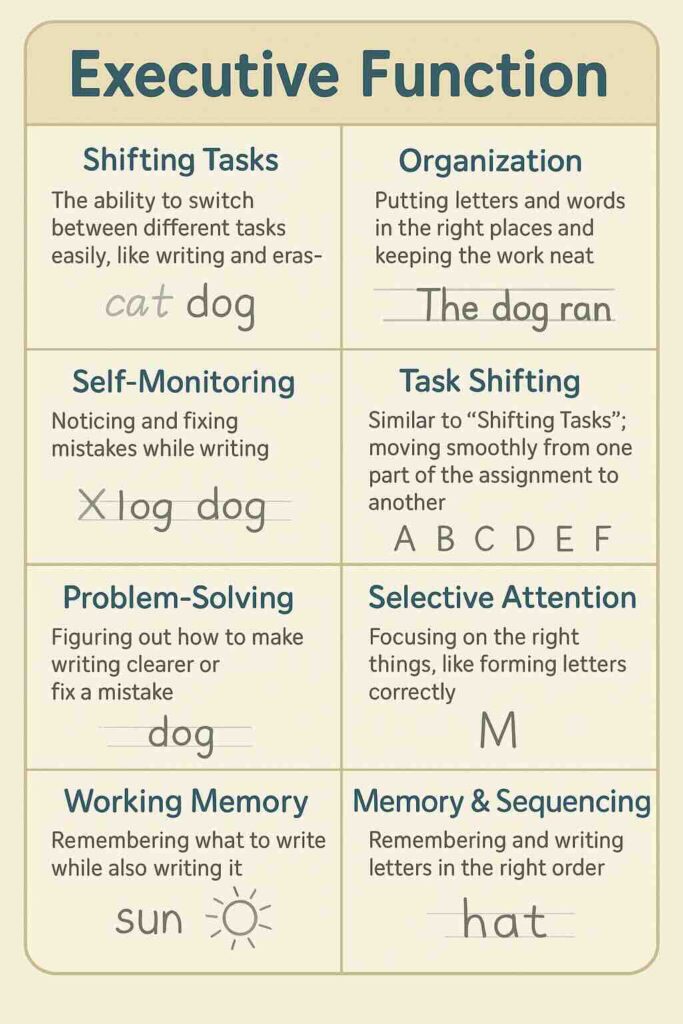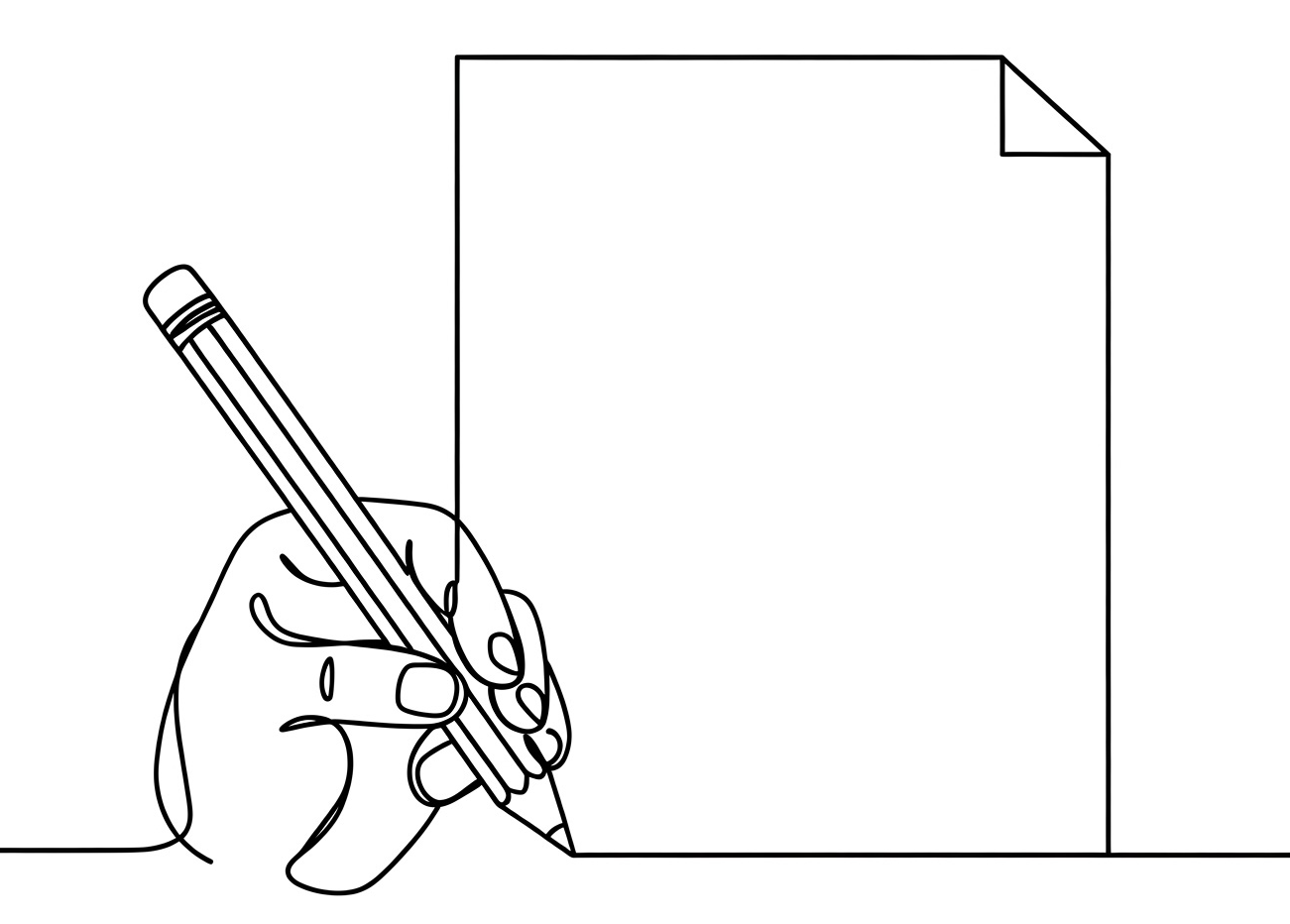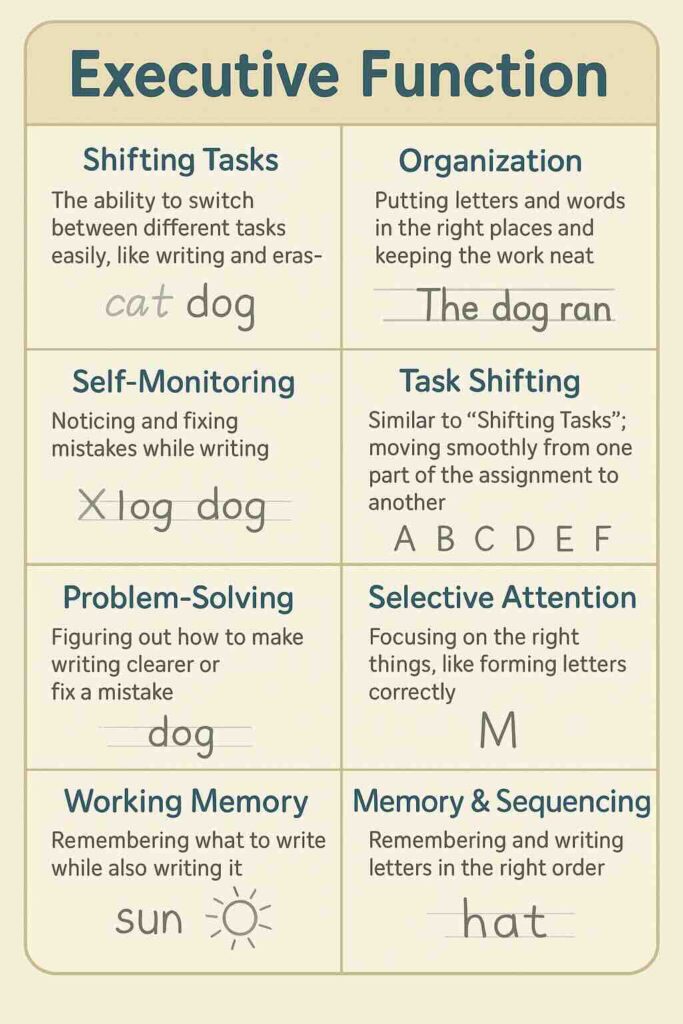Executive function helps kids plan, focus, remember steps, and control their actions. These brain skills are very important when children are first learning how to write.
If a child struggles with executive function, you might see things like:
- Letters all over the page
- Incomplete or skipped parts of a task
- Trouble remembering how to write certain letters
- Giving up when writing gets hard

Shifting Tasks
- What it means: Switching from one part of an activity to another.
- Handwriting example: A child has trouble moving from tracing letters to writing them on their own. They might also struggle to switch from drawing to labeling a picture with words.
Organization
- What it means: Putting materials and ideas in order.
- Handwriting example: A child may start writing in the middle of the page or mix up the order of letters in their name (e.g., “Liam†written as “Lamiâ€). Their paper might be cluttered or have letters floating around randomly.
Self-Monitoring
- What it means: Noticing and fixing mistakes on your own.
- Handwriting example: A child may not realize they’ve written a letter backwards (e.g., “b†instead of “dâ€), skipped a letter in a word, or written off the line. They often don’t look back to check their work unless reminded.
Problem-Solving
- What it means: Figuring out what to do when something doesn’t go right.
- Handwriting example: If a child forgets how to write a letter or can’t fit a word on the line, they may just stop or scribble. They may not try turning the paper, asking for help, or starting again.
Selective Attention
- What it means: Staying focused on the task and ignoring distractions.
- Handwriting example: The child may look around the room, talk to others, or play with their pencil while writing. As a result, they might forget what letter they were on or lose their place when copying from a model.
Emotional Self-Regulation
- What it means: Emotional self-regulation is a part of executive functioning that allows children to manage feelings like frustration, anxiety, or discouragement—especially when tasks become challenging. In handwriting, this means being able to tolerate mistakes, cope with the discomfort of slow or difficult writing, and continue working without shutting down or becoming overwhelmed. When a child struggles with emotional regulation, even a small writing assignment can lead to avoidance, reduced effort, or emotional outbursts, all of which interfere with learning and skill development.
- Handwriting example: If a student makes a mistake while writing and becomes upset, erasing the entire page or refusing to continue, this may reflect poor emotional regulation.
Working Memory
- What it means: Holding small bits of information in your mind while using them.
- Handwriting example: A child copying the word “cat†from the board might forget the second letter by the time they’ve written the first. They may forget how to form a letter mid-task or leave out parts of a sentence.
Memory & Sequencing
- : A child may write letters in the wrong sequence (e.g., “tap†becomes “patâ€), forget to start with a capital letter, or skip steps like putting spaces between words. They might also forget the correct stroke order when forming letters.
| Age | Digit Span Forward (Mean Raw Score) | Digit Span Backward (Mean Raw Score) |
| 6 | 4.3 | 2.2 |
| 7 | 5 | 3 |
| 8 | 5.6 | 3.7 |
| 9 | 6.2 | 4.3 |
| 10 | 6.9 | 4.9 |
| 11 | 7.5 | 5.5 |
| 12 | 8 | 6 |
| 13 | 8.4 | 6.4 |
| 14 | 8.9 | 6.9 |
| 15 | 9.3 | 7.3 |
| 16 | 9.5 | 7.5 |
| 17–19 | 9.8 | 7.7 |
Source: Wechsler, D. (2014). WISC-V Technical and Interpretive Manual. San Antonio, TX: NCS Pearson.

